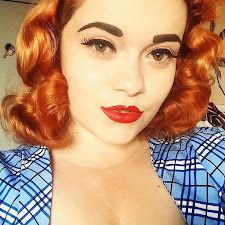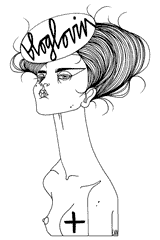Created in the 19th Century, art collector John Bowes and his wife Josephine housed their vast collections of European art and ceramics that spanned five centuries. After their deaths, The Bowes Museum was born on the 10th June 1892, where ever since, visitors have had the desirable ability to admire John & Josephine’s treasures and also enjoy new exhibitions.
Over the past year so, many of my companions and lecturers have talked about the ground-breaking Fashion & Textiles Gallery that arrived at The Bowes Museum last year, so the day before my twenty-second birthday, as a treat, I embarked on a bumpy car ride to The National Trust site, upon which I’d visited before, to gain some better insight into a subject close to my creative heart. Being from the north of England I have always dreamt of spontaneously boarding a train to London to visit the V&A museum to surround myself with the beauty of the fashion and textile led collections which have included the Alexander McQueen: Savage Beauty space and the current boasting of a fine collection of wedding dresses that date between 1775-2014 and a history of Italian fashion between 1945-2014. So the fact that being practically cut-off for any kind of fashion based museum collections of any gravitas, The Bowes Museum aided in pampering the twitching fibres of my interest in historical fashion.
With black walls and contemporary glass cubes filled with precious examples of dress dating from the 18th century, the thought of being within touching distance of textiles so important to fashion and historical factors including elements of everyday life, war, religion, politics, love was enough to make my hairs stand on edge, especially with the fact I was the only one in the room. The thoughts ran through my head of the effects these very garments have had on the world we live in today, to see the transitions of clothing and gravitas upheld on the shoulders of some who wore them was indescribable.
Beginning with exquisite examples of high fashion for church and state dating from 1580 through to diffusion of style of 1970, the comprehensive layout with invisible mannequins gave me a 360 degree view of garments, bringing a memorable sense of realism to the pieces.
(High Fashion For Church and State – 1550-1700, Fashion and the Luxury Textile Trades – 1700-1800, Influences and Innovations 1800-1850, Shaping Fashion – 1850-1900, Simplicity of Design – 1900-1950, Diffusion of Style – 1950-1970)
A particular highlight of the gallery is that it houses bodices, dresses, gloves, fans and jackets once worn by Empress Eugenie, the last Empress of France and wife of Napoleon III. Dressed by infamous couturier Charles Worth, alongside her role in French royalty, she was incredibly well known for her fashion and was once christened as “The Countess Of Crinoline”.
Even after her death in 1920, her legacy remains. The popular “Eugenie” hat was made famous by the iconic Greta Garbo and featured in high fashion spreads of Vogue in the 1930s, consisting of a dramatic tilt and often a large ostrich feather plume. The “Eugenie Paletot” was also christened after the empress of fashion and was more likened to her actual everyday apparel, a high fashion coat with bell sleeves and a one button tie at the neck.
As the gallery swept into the late 19th and early 20th century, tightly focussed examples of wedding dresses from the 1870s took centre stage, as well as the introduction of corsetry and bustle cage crinolines, usually made from whalebone. Adapted from the panniers of the 18th century, it was the first time that something like this was accepted by every social standing and was the prominent silhouette of the time.
But it wasn’t just the history of women’s garments on show, the gallery flaunted a fine array of men’s historical pieces, many worn by men in power and authority. The male outfits focussed on the history and timeline of bespoke tailoring. From the humble beginnings of Savile Row to the tailors commissioned by royalty, there was chance to gain knowledge on the process of tailoring and to even witness royal sign off’s and a book of commissions belonging to Napoleon Bonaparte.
(Dated 20th March 1863)
A glass cube larger than others is a focal point to the room, housing the grandest of outfits. It is used as a textile study centre which can be used for study and presentations upon appointment and gives curators chance to display the finest pieces and gives a feel of the treasured untouchable to those outside it, although viewable.
The grandest feeling of all was being alone among such historically important garments and imaging the life it has led since its conception, the feelings the wearer has experienced, the status they held, the places they travelled and the people they loved. The tailor or couturiers work of arts have amassed into a glowing amalgamation of intricate embroidery and newly celebrated textiles.
The Bowes Museum provided the most incredible visual representation of over 400 years of fashion. I studied small parts of the history of fashion at the back end of last year, but personally, nothing made me understand it more than being face-to-face with the garments that have gone through the most wonderful of transitions.









.jpeg)
.jpeg)
.jpeg)

.jpeg)
.jpeg)
.jpeg)
.jpeg)
.jpeg)
.jpeg)

.jpeg)
.jpeg)
.jpeg)
.jpeg)
.jpeg)
.jpeg)
.jpeg)











